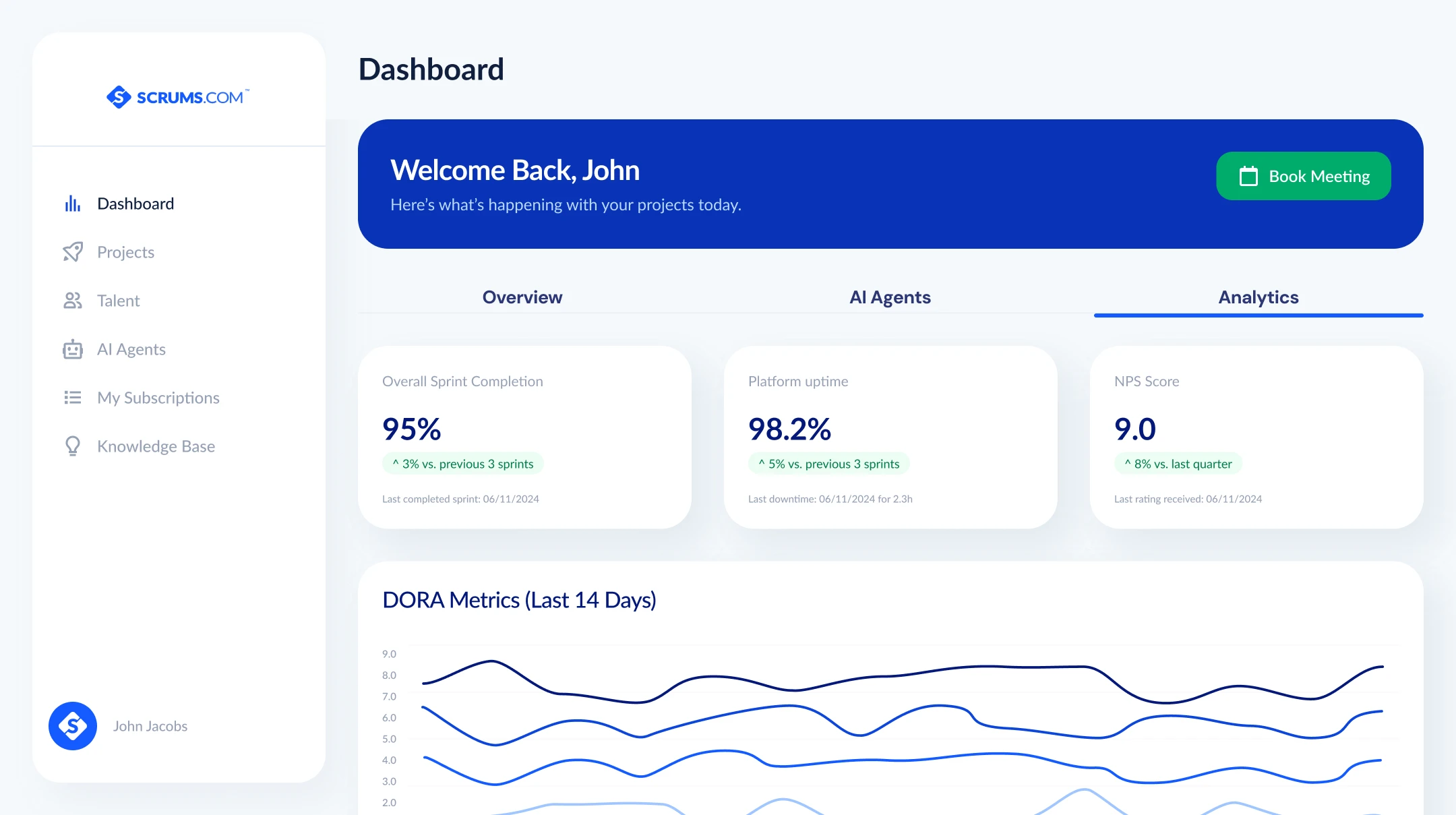Managing Technical Debt for Software Quality & ROI

Technical debt is any shortcut, gap, or compromise in your software that helps you deliver faster now, while “borrowing” time and effort that must be paid back later. Originally coined by Ward Cunningham, technical debt isn’t just “bad code”: it’s accrued whenever a decision to get short-term velocity (shipping, “just make it work,” quick fixes) results in extra maintenance or lost productivity down the road.
“Technical debt is a natural part of building great software. Ignored, it grows. Managed, it can be an innovation advantage."
How Does Technical Debt Impact Software Quality?
Technical debt and software quality are inseparable.
- Debt isn’t the same as a bug. It’s more subtle, allowing (or accepting) “non-ideal” solutions that risk overall robustness, maintainability, documentation, or even team morale.
- Quality is not just passing tests. Debt eats away at reliability, speed, and extensibility, making every next change riskier and costlier.
Key Risks:
- Slower feature delivery, more regressions, fear of refactoring
- Erosion of engineering culture (“band-aid” mentality)
- Poorer user experiences and higher operational costs
Types of Technical Debt
1. Intentional debt:
- Chosen to hit critical deadlines (“ship MVP, clean up later”)
- Trade-off for “first-mover” advantage
2. Unintentional debt:
- Caused by lack of standards, unclear ownership, or accidental complexity
Categories of Technical Debt:
- Code debt: quick hacks, poor code coverage, obsolete dependencies
- Architecture debt: tightly coupled components, outdated frameworks
- Process debt: shortcuts in QA, overlooked reviews, lack of CI/CD
- Organizational debt: under-resourced teams, poor documentation, tribal knowledge
👉 Read about the Types of Technical Debt Explained.

Why Technical Debt Happens (and How to Spot It)
Root Causes:
- Business pressures (“aggressive deadlines,” “just make it work”)
- Legacy code or inherited systems
- Evolving requirements/tech landscape
- Insufficient peer reviews, automated testing, or architectural planning
How to Spot It:
- Piling up “TODOs” and comments about workarounds
- Growing bug lists, PRs blocked by unclear side effects
- New features consistently slower to develop
Red Flags:
- Productivity slowdowns (burnout, turnover)
- Repeated “quick fixes” that hide deeper rot
- Codebases getting harder to onboard/join
Measuring Technical Debt (and Software Quality)
Why Measurement Matters:
- You can’t fix what you can’t quantify.
- Turning debt into observable, tracked metrics gets buy-in and gamifies improvement.
💡 Pro Tip: Regular debt reviews in retros/sprint reviews, using these software quality metrics, make debt visible as part of your SDLC, not an afterthought. See the IEEE Software Quality Standards for formal definitions and benchmarks.
How Scrums.com's SEOP Makes Technical Debt Quantifiable
At Scrums.com, we take technical debt measurement, and engineering health, far beyond traditional velocity or surface-level tracking. Our analytics, built into the Software Engineering Orchestration Platform (SEOP), provides engineering leaders with a real-time, 360° view of delivery, code quality, and risk. By integrating seamlessly with tools like GitHub and JIRA, our dashboard automatically pulls live DORA metrics (deployment frequency, lead time, recovery time, change failure rate) and visualizes trends across current sprints.
You get automated insights into sprint completion rates, code churn, and unresolved defects, without manual data pulls or combing through spreadsheets. This unified perspective lets you benchmark technical debt at the team and organizational level, compare trends over time, and hold teams accountable to both commitments and continuous improvement. The result? No more “black box” engineering: technical debt becomes a visible, trackable metric that can be addressed during sprint retros, planning, or ROI reviews—turning ambiguity into actionable dialogue.
If you use Scrums.com’s SEOP, technical debt and software quality are no longer just gut feel, they’re front-and-center in your leadership dashboard, driving trust, focus, and a culture of debt reduction.

The True Cost of Technical Debt
Technical debt isn’t just a “risk”, it’s a silent tax:
- Slower time-to-market: velocity drops as debt rises
- Higher engineering cost: newer features blocked by fear/regression debt
- Customer impact: more downtime, sluggish feature releases
Strategies for Managing & Reducing Technical Debt
Preventative Best Practices:
- Debt log or register throughout projects
- Peer code reviews, strict CI/CD, proper branching strategies
- Test automation as a non-negotiable
Remediation Tactics:
- Prioritize obvious/high-impact debt with story points/labels
- “Payment sprints” or “debt days” built into product roadmap
- Refactor incrementally; avoid “big bang” rewrites
Frameworks:
- “Stop the Bleeding” (zero tolerance for new debt)
- “Interest Rate” analysis (tackle fastest-accumulating pain first)
- Debt burndown KPIs
👉 Read about How to Manage Technical Debt (Step-by-Step Frameworks.
Technical Debt in the Real World
- Scenario A: You scaled an MVP to production... but now new features are taking 2x as long.
- Scenario B: Customer support is fielding more bug tickets than last year, code is brittle, every fix triggers a regression.
- Scenario C: Your best engineers dread touching “certain parts of the codebase.”
The Role of Engineering Managers & CTOs
Where Leadership Wins (or Fails):
- Proactively track and “report out” on debt+quality as business risks (not just engineering KPIs).
- Get buy-in from product and execs: link debt remediation to business goals.
- Foster a “debt-aware” culture, where refactoring isn’t an afterthought, but a strategic choice.
Action Steps:
- Block out “debt runway” before launch/new features
- Champion a culture of learning, not blame or “band-aids”
- Celebrate debt reduction as a team achievement
Technical Debt Management Toolkit
Essential Tools:
- Static code analysis: SonarQube, CodeClimate
- Issue tracking: JIRA, Linear
- Quality dashboards/metrics: Grafana, Kibana
- Quick Checklists: Sprint retro prompts (“Are we tracking/refactoring debt?”)
👉 Read more about Technical Debt Management Tools You Should Know.
FAQs & Next Steps
Quick Reference (Action Points):
- Regularly review and log technical debt in grooming/sprint retro
- Use metrics to spot, communicate, and set priorities for remediation
- Build at least one “debt reduction” task per sprint—show progress
- Advocate for quality metrics that directly reflect on business outcomes
- If your team or project can't dig out, consider outside expertise
When to Bring in a Software Development Company:
- Legacy/monolithic code or “can’t move without breaking things”
- Repeated missed releases due to unseen debt
- Inherited codebase with no institutional memory (tribal knowledge lost)
- Need for third-party QA/audit or “outside-in” refactoring plan
Not sure where to start?
Chat with an expert about a code audit or code quality strategies.
Grow Your Business With Custom Software
Bring your ideas to life with expert software development tailored to your needs. Partner with a team that delivers quality, efficiency, and value. Click to get started!
